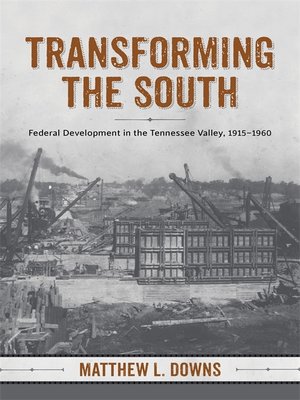Transforming the South
ebook ∣ Federal Development in the Tennessee Valley, 1915-1960 · Making the Modern South
By Matthew L. Downs

Sign up to save your library
With an OverDrive account, you can save your favorite libraries for at-a-glance information about availability. Find out more about OverDrive accounts.
Find this title in Libby, the library reading app by OverDrive.



Search for a digital library with this title
Title found at these libraries:
| Library Name | Distance |
|---|---|
| Loading... |
Historians have long recognized the middle of the twentieth century as significant in the history of the modern South, owing to a convergence of social change, political realignment, and cultural expansion. This period in southern history has provided extensive material for scholars of race, gender, and politics. In addition, sweeping economic changes spread throughout the South, permanently shifting the area's material resources. Transforming the South examines this transition from farm to factory and explores the dramatic reshaping of the region's economy.
Matthew L. Downs focuses on three developments in the Tennessee Valley: the World War I-era government nitrate plants and hydroelectric dams at Muscle Shoals, Alabama; the extensive work completed by the Tennessee Valley Authority; and Cold War/Space Age defense investment in Huntsville, Alabama. Downs argues that the modernization of the Sunbelt economy depended on cooperation between regional leaders and federal funders. Local boosters lobbied to receive federal funds for their communities while simultaneously forming economic development organizations that would prepare those communities for further growth. Economic reform also drove social reform: as members of historically disenfranchised groups attained employment in the new industrial workforce, they gained financial and political capital to push for social change.
Transforming the South considers the role played by the recipients of government funds in the mid-twentieth century and demonstrates how communities exerted an unparalleled influence over the federal investments that shaped the southern economy.







